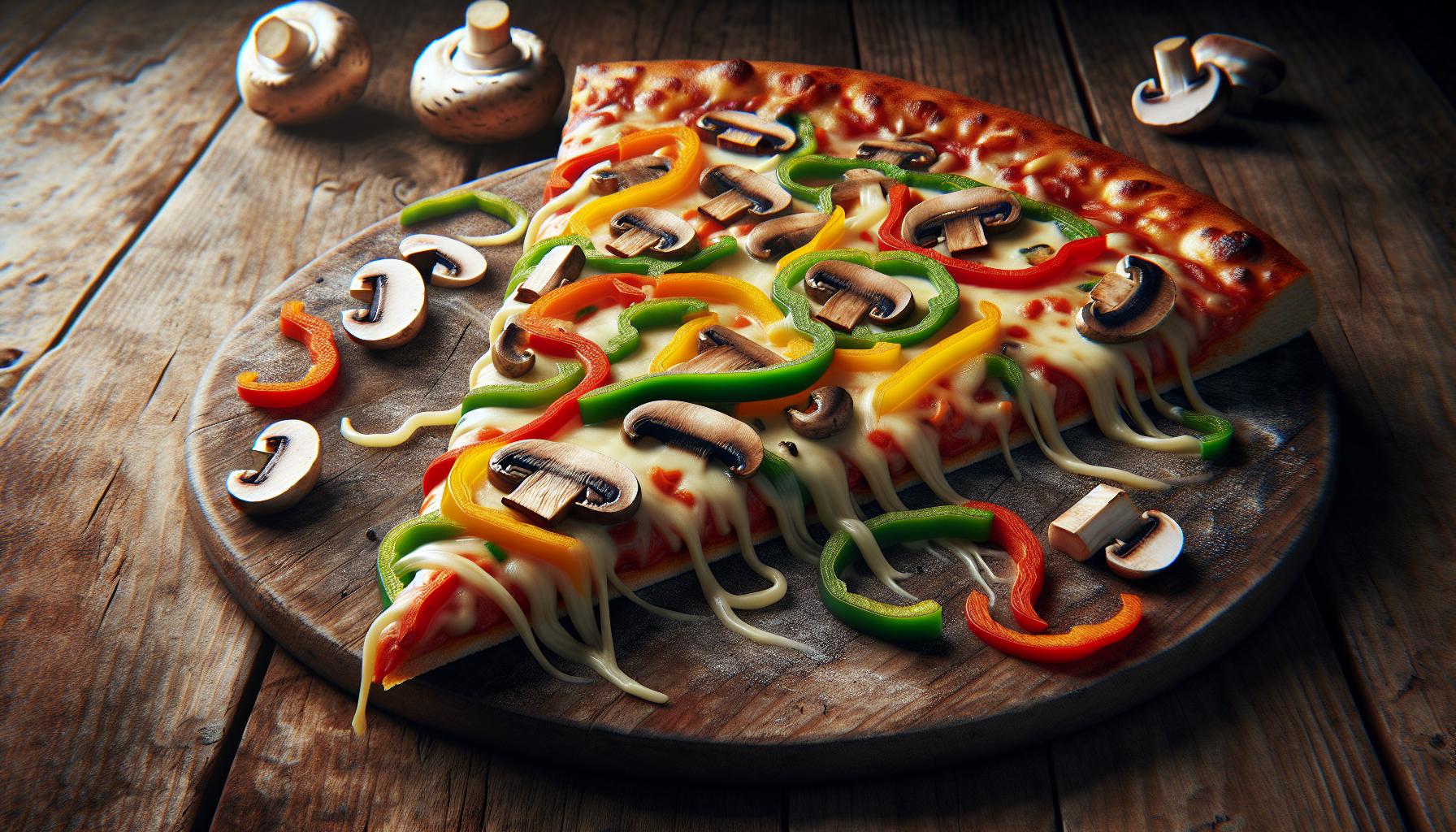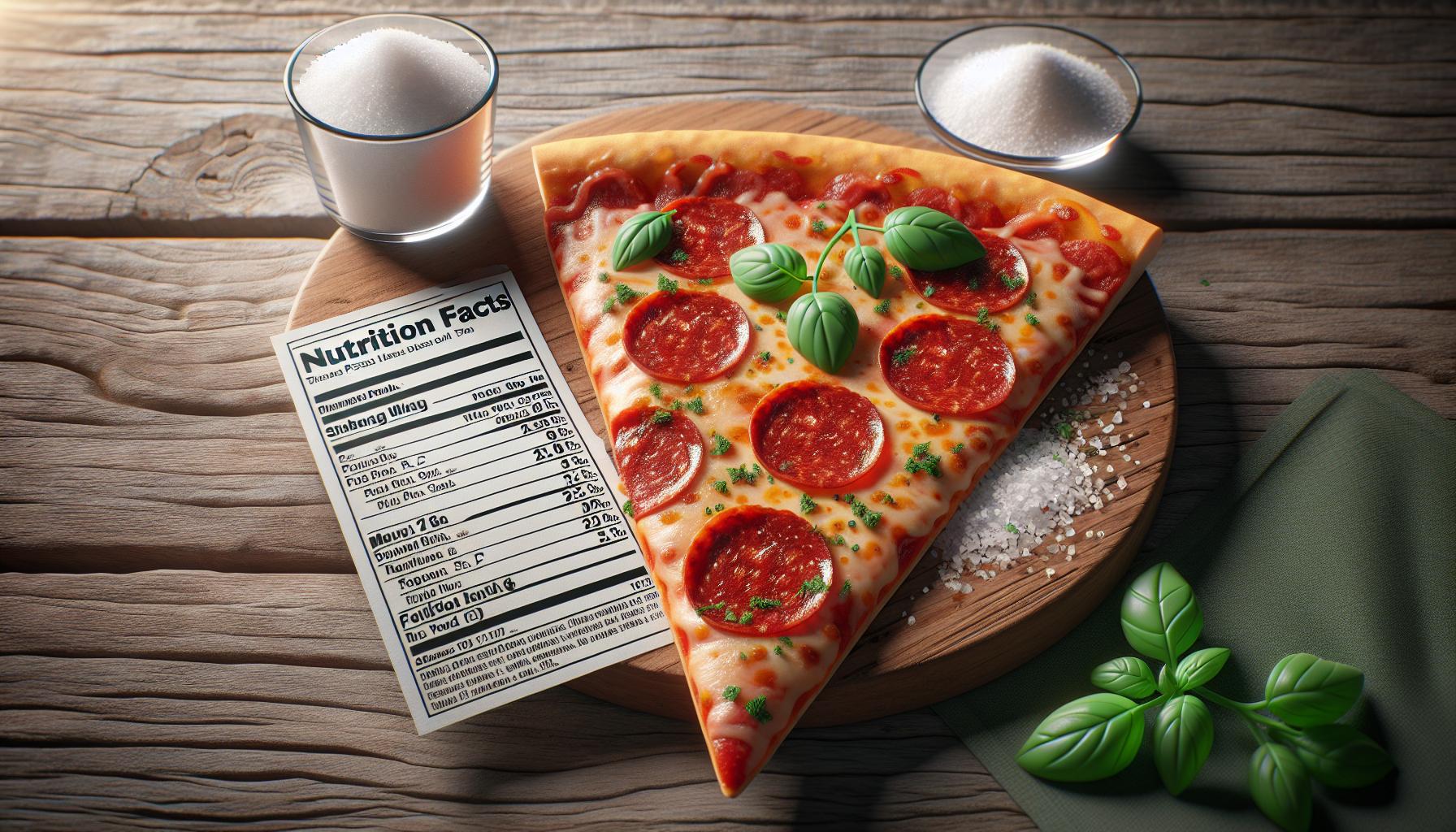Who doesn’t love a hot slice of pizza? While this beloved comfort food often gets labeled as “junk food” the nutrition facts might surprise you. Understanding what’s really in that cheesy triangle can help make informed decisions about everyone’s favorite Italian-American indulgence.
From the crispy crust to the melted mozzarella and zesty tomato sauce pizza actually packs some unexpected nutritional benefits. A typical slice contains protein calcium and essential vitamins – though the exact nutritional value depends on toppings size and preparation method. Whether it’s a quick lunch on the go or a Friday night tradition knowing the nutritional content helps balance enjoyment with healthy eating habits.
Slice of Pizza Nutrition
Pizza portions vary significantly across different establishments, affecting the overall nutritional content per slice. The standardization of slice sizes helps in accurately tracking nutritional intake.
Standard Slice Sizes
A standard slice from a 14-inch pizza measures approximately 1/8 of the pie, yielding 8 triangular pieces. Common pizza sizes include:
| Pizza Size (inches) | Slices | Slice Area (sq inches) |
|---|---|---|
| 12-inch | 8 | 14.1 |
| 14-inch | 8 | 19.2 |
| 16-inch | 8-10 | 25.1 |
| 18-inch | 10-12 | 31.8 |
Restaurant chains typically serve larger slices than delivery pizzas, with New York-style pizzas offering wider, thinner slices compared to deep-dish varieties.
Caloric Content Per Slice
The caloric content of pizza slices varies based on crust type, toppings, and size:
| Pizza Type | Calories/Slice | Fat (g) | Protein (g) |
|---|---|---|---|
| Cheese | 200-300 | 10-13 | 8-10 |
| Pepperoni | 250-350 | 12-15 | 10-12 |
| Veggie | 180-250 | 8-11 | 7-9 |
| Deep Dish | 350-400 | 15-20 | 12-14 |
Thin-crust options contain fewer calories than thick-crust or stuffed-crust varieties. Extra cheese or meat toppings add 50-100 calories per slice.
Major Nutritional Components

A standard slice of pizza combines essential macronutrients in varying proportions. The nutritional profile depends on the ingredients used in preparation including the crust type toppings sauce.
Carbohydrates and Fiber
The crust delivers 26-30g of carbohydrates per slice for traditional medium pizzas. Refined white flour crusts provide quick-energy carbohydrates while whole wheat variants contain 2-3g of dietary fiber. Regular pizza dough contributes 85% of the total carbohydrate content with tomato sauce adding 3-4g of natural sugars. Modern cauliflower crusts reduce carbohydrates to 5-6g per slice making them suitable for low-carb diets.
Protein Sources
Cheese serves as the primary protein source delivering 6-8g per slice. Mozzarella contributes complete proteins containing all essential amino acids. Meat toppings like pepperoni ham chicken increase protein content by 3-5g per slice. Plant-based options such as mushrooms bell peppers onions add 1-2g of protein. Premium pizzas featuring multiple cheese varieties can contain up to 12g of protein per slice.
Fat Content and Types
A cheese pizza slice contains 10-13g of total fat with 4-5g from saturated sources. The majority of fats come from dairy products specifically mozzarella cheese. Olive oil used in traditional preparations adds 2-3g of heart-healthy monounsaturated fats. Meat toppings increase fat content by 3-4g per slice while vegetables maintain the base fat levels. Low-fat cheese alternatives reduce total fat to 6-8g per slice without compromising taste.
| Component | Regular Slice | Low-Fat Slice |
|---|---|---|
| Total Fat | 10-13g | 6-8g |
| Carbs | 26-30g | 5-6g |
| Protein | 6-8g | 6-8g |
| Fiber | 1-2g | 2-3g |
Vitamin and Mineral Content

A standard slice of pizza provides several essential vitamins and minerals through its diverse ingredients. The combination of cheese, tomato sauce and various toppings creates a rich micronutrient profile.
Calcium and Dairy Benefits
Mozzarella cheese delivers 15% of the daily recommended calcium intake per pizza slice. The calcium content supports bone health through optimal absorption when combined with the vitamin D found in cheese. A typical cheese pizza slice contains:
| Nutrient | Amount per Slice | % Daily Value |
|---|---|---|
| Calcium | 201mg | 15% |
| Protein | 8g | 16% |
| Vitamin D | 0.3mcg | 2% |
Essential Micronutrients
Tomato sauce provides lycopene and vitamin C, with each slice containing 2mg of lycopene. The sauce contributes these key nutrients:
| Micronutrient | Amount per Slice | % Daily Value |
|---|---|---|
| Vitamin C | 3mg | 3% |
| Vitamin A | 300IU | 6% |
| Iron | 1.8mg | 10% |
| Potassium | 168mg | 4% |
Vegetable toppings enhance the micronutrient content. Bell peppers add vitamin C. Mushrooms contribute B vitamins. Onions provide chromium. The combination of ingredients creates a comprehensive vitamin profile in each slice.
Health Considerations

Pizza consumption requires careful attention to specific nutritional elements that affect overall health. Understanding these factors helps in making informed decisions about portion control and topping selections.
Sodium Levels
A standard slice of cheese pizza contains 600-800mg of sodium, representing 25-33% of the daily recommended intake. The sodium content increases substantially with processed meat toppings like pepperoni adding 250-300mg per slice. Restaurant pizzas typically contain higher sodium levels compared to homemade versions due to pre-made sauce formulations. Sodium sources in pizza include:
- Pizza dough (150-200mg from salt added during preparation)
- Tomato sauce (200-250mg per slice)
- Cheese blend (250-300mg from mozzarella cheese)
- Cured meat toppings (250-300mg additional sodium)
- Seasoning blends (50-100mg from herbs and spices)
Saturated Fat Impact
A slice of cheese pizza delivers 4-5g of saturated fat, primarily from dairy products. The saturated fat content increases by 2-3g with meat toppings such as sausage or pepperoni. Here’s the saturated fat breakdown per slice:
- Mozzarella cheese contributes 3-4g
- Pizza crust adds 0.5-1g
- Meat toppings increase content by 2-3g
- Olive oil in sauce provides 0.5g
- Extra cheese toppings add 2-3g additional fat
The American Heart Association recommends limiting saturated fat intake to 13g daily, making a single slice of pizza account for 30-38% of this limit.
Making Healthier Pizza Choices
Smart ingredient choices transform pizza into a nutritious meal while maintaining its delicious taste. Enhanced nutrition comes from selecting quality ingredients and mindful portion control.
Selecting Better Toppings
Fresh vegetables add essential nutrients with minimal calories to pizza slices. Bell peppers provide vitamin C, mushrooms offer vitamin D, and spinach delivers iron plus folate. Lean proteins like grilled chicken breast contribute 15g of protein per serving compared to 8g from pepperoni. Plant-based options such as artichokes, roasted eggplant or zucchini create filling alternatives at 25 calories per half cup. Reduced-fat cheese contains 6g of fat per ounce versus 9g in full-fat varieties while maintaining calcium content. Fresh herbs like basil, oregano and garlic enhance flavor without adding calories or sodium.
Crust Alternatives
Whole grain crusts contain 4g of fiber per slice compared to 1g in traditional white flour crusts. Cauliflower crusts reduce carbohydrates to 5g per serving versus 30g in regular crust while adding vitamins K and C. Protein-rich quinoa crusts deliver 6g of complete protein per slice. Thin crust options cut calories by 25% compared to regular thickness. Gluten-free crusts made from almond or chickpea flour provide additional protein and healthy fats. Vegetable-based crusts like zucchini or sweet potato offer extra nutrients while reducing total carbohydrates to 15g per serving.
Make Informed Decisions
Pizza’s nutritional value shouldn’t be dismissed simply because it’s often labeled as junk food. While a slice can pack significant calories sodium and fats making mindful choices about toppings crust type and portion sizes lets people enjoy this beloved food as part of a balanced diet.
Opting for veggie toppings whole grain crusts and moderate portions transforms pizza into a more nutritious meal that provides essential proteins vitamins and minerals. Understanding pizza’s nutritional profile helps make informed decisions without sacrificing the joy of enjoying a delicious slice.



